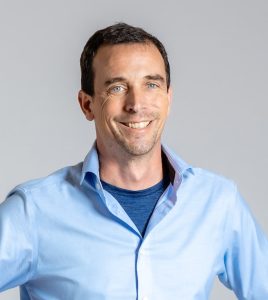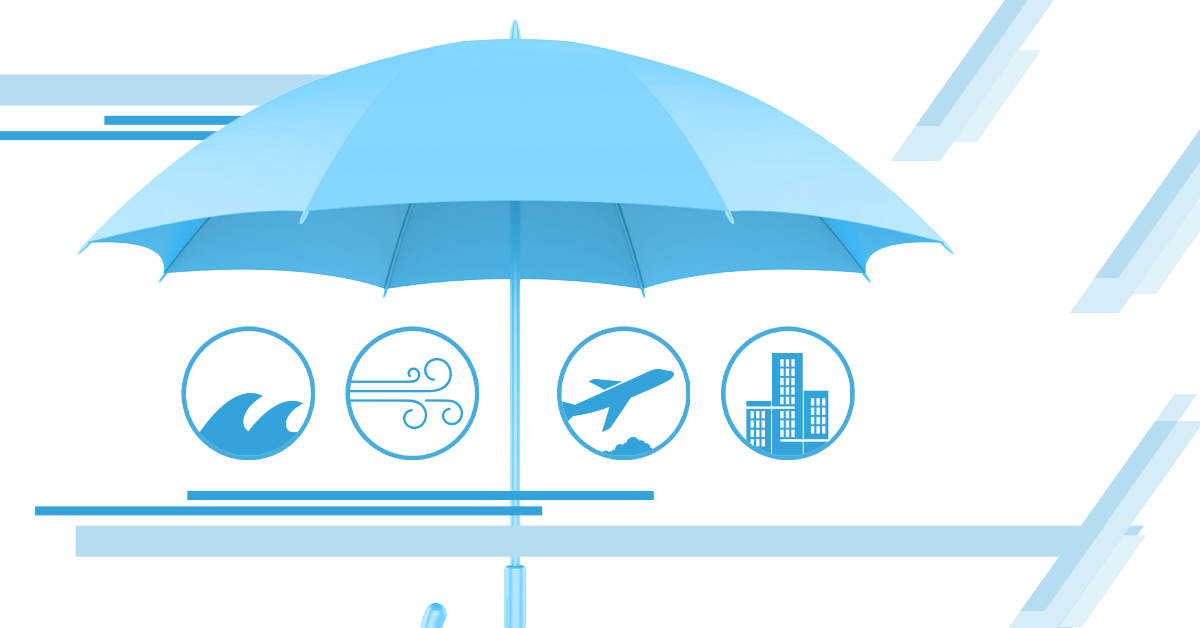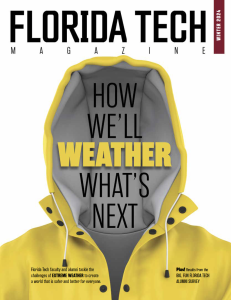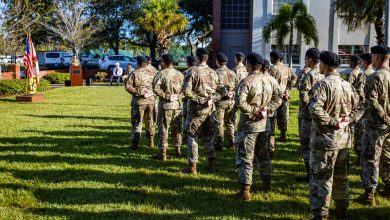How We’ll Weather What’s Next
Florida Tech faculty and alumni tackle the challenges of extreme weather to create a world that is safer and better for everyone.
By Erin Peterson
A world with increasingly extreme weather can feel ominous. The storms are bigger. The wildfires are more devastating. The heat waves are longer and fiercer.
While these challenges loom, Florida Tech faculty and alumni experts also see something even more powerful on the horizon: opportunity.
“This is a chance to rethink everything,” says Lori Cary-Kothera ’96 M.S, director of climate adaptation and resilience at the White House Council for Environmental Quality. “We don’t just have to learn from our past; we can lead new, innovative efforts and show the world what can be done.”
Across the board, Florida Tech experts are doing just that. They’re fueling change through innovative research and practical, on-the-ground solutions that fortify our coasts, clean our air, strengthen our homes and buildings and help us rebuild resiliently.
Read on to see eight ways Florida Tech alumni and experts are addressing the impact of extreme weather.
1. We’re taking effective action to maintain our coasts.

Robert Weaver is an associate professor of ocean engineering.
Robert Weaver knows the numbers can be eye-popping: In late 2023, nearly $50 million in federal funding went to replace sand on Brevard County beaches in the wake of 2022’s Hurricane Ian.
“People want to know if there’s value in sand that’s just going to wash away,” he says. “It can be a tough sell.”
But for Weaver, who studies coastal eco-engineering, hydrodynamics and storm surge inundation, the need is clear. Hurricane waves and storm surges, paired with slowly rising sea levels that amplify these extreme weather effects, cause significant erosion. Left unchecked, they can damage or destroy nearby property and infrastructure.
“Healthy, wide beaches are an important part of having a resilient coastline,” he says.
While the impacts of climate change and extreme weather have grown sharper in recent years, and the cost of trucking in beach-quality sand has increased, Weaver says that the current process of maintaining beaches in the face of erosion is effective. He is optimistic it will continue to be so for the foreseeable future.
“In Florida, we’ve been able to hold off sea-level rise, in the sense that our shoreline position has been held, and waves aren’t attacking further up the beaches in the dunes,” he says.
While large-scale ocean circulation patterns could throw a wrench into predictions going forward, Weaver says continued ingenuity and funding will allow Florida—and other coastal areas—to continue to thrive.
“We might not be able to stop water levels from rising, but when we know what’s going to happen, we’re able to develop plans to manage the outcome,” he says.
2. We’re using the federal government’s vast scale to create sustainable change.

Lori Cary-Kothera ’96 M.S. is director of climate adaptation and resilience at the White House Council for Environmental Quality.
In our nation’s effort to mitigate the impact of climate change and extreme weather, Lori Cary-Kothera knows that the federal government brings a not-so-secret weapon to the fight: its vast size and resources.
“The federal government is the largest procurement spender and the largest landowner with the largest number of buildings,” she says. “That presents an opportunity to lead and to show what can be done around building national resilience.”
Alongside another Florida Tech alumnus, Forbes Tompkins ’10 M.S., Cary-Kothera works with federal agencies to develop their Federal Climate Adaptation Plans (CAPs) and leads a group of federal agency leaders, called the Federal Climate Adaptation Plan Network, who implement these plans. With the support of actionable data about the hazards facing federal buildings and employees, they’ve worked to map out the ways that they can use these resources to make a measurable impact in building climate resilience.
For example, these teams have worked together to support general climate literacy among employees. They’ve also created training to help leaders make climate-informed decisions for big purchases. If a vendor is located in the hurricane-prone Gulf of Mexico, agencies might opt to have backup plans if extreme weather shuts down a plant. They’ve taken a close look at ways to pair national approaches with local action, recognizing that every community has different needs.
“The threat of extreme weather events fueled by climate change is a moment to rethink how we do business, how we run our government safely and effectively for the long term and how we incorporate resilience into our personal lives,” she says. “This is a huge opportunity and a chance to think about the future we want to build for this country.”
“The threat of extreme weather events fueled by climate change is a moment to rethink how we do business, how we run our government … and how we incorporate resilience into our personal lives.”
Lori Cary-Kothera ’96 M.S.
3. We’re bridging cutting-edge science with effective communication.

Da’Vel Johnson ’14, ’15 M.S., is a meteorologist for the National Weather Service and a liaison to the Federal Emergency Management Agency’s (FEMA) National Incident Management Assistance Team.
In his decade of work for the National Weather Service, Da’Vel Johnson has been through his share of extreme weather events, which he ticks off one by one: hurricanes Matthew, Harvey, Irma and Maria; California’s drought-fueled Camp Fire in 2018; and catastrophic heat waves throughout the country.
“I can go on and on,” he says.
In his role, Johnson gives weather briefings, supports on-the-ground strategy before the weather hits and helps map out recovery efforts in areas affected by extreme weather.
Forecasting and weather modeling have improved by leaps and bounds since he started in his role, but Johnson says he’s particularly excited about the inflection point we’re at right now: not just correctly forecasting what’s next, but sharing that information in clear and timely ways that lead individuals and organizations to take the right actions.
These improvements include leveraging social media and machine learning. In the past, for example, the Weather Service tended to use technical, scientific language in its communications to the broader public.
“Now, we do direct feedback through Facebook and other services,” says Johnson. “You can talk to the Weather Service in ways that weren’t available before.”
The Weather Service is also using machine learning and AI to translate its messages into languages including Spanish, Mandarin and Vietnamese, a process that makes getting emergency information easier and more equitable.
“Is it perfect? No. It’s difficult and takes a lot of time,” says Johnson. “But the trend is in the right direction.”
4. We’re helping people breathe cleaner air.

Melissa Sheffer ’06, ’08 M.S, is a meteorologist with the Environmental Protection Agency (EPA).
In her work modeling air dispersion, Melissa Sheffer looks at major sources of industrial pollutants—power plants, smelters, mines and the like—and pairs the dangerous emissions of those sites with meteorological data to determine their impact on air quality levels.
Her work has important intersections with extreme weather.
“We’re seeing a lot more events in which stagnant air sits over the country, which means we’ll have reduced mixing in the atmosphere for pollutants,” she says. “Plus, the increased heat and sunlight that typically accompanies these stagnant air masses can cause a secondary formation of pollutants, like high concentrations of ozone.”
While this one-two punch of factors is an unwelcome development, Sheffer also says there is significant reason for hope. Today’s sophisticated modeling tools can work in tandem with tighter regulations to minimize the impact of air quality issues. A recently proposed rule to lower what qualifies as acceptable levels of particulate matter in ambient air could further support better air quality.
“All of that helps communities breathe better air, even as we continue to have extreme weather events,” she says.
5. We’re using technology to help pilots safely avoid extreme weather.

Michael Splitt is an assistant professor of meteorology.
Buckle up, frequent fliers: Extreme weather in a climate-changed world might make our plane trips a whole lot bumpier, says Michael Splitt.
Changing jet stream patterns could cause more high-altitude turbulence for transatlantic flights. That could lead to new, longer routes to avoid the jostling—as well as higher fuel costs and ticket prices. On the ground, record rainfall and thunderstorms may lead to dangerous lightning and standing water that shuts down ground operations.
Splitt and his graduate research students are looking at ways to help pilots navigate this new world with tools to identify dangerous cloud types, like the towering cumulus.
“Weather observations have typically been very human-oriented, but that human
support can be more difficult to find for smaller airports,” he says. “Cameras with AI capability could give an early alert in data-poor areas.”
That extra data—if communicated effectively to pilots who might be affected by it—can lighten the workload required at smaller airports, provide critical information to pilots whose flights might be affected by the information and help avoid the risky situations that may be more common in the future.
“I wish we could get the greenhouse gasses under control,” he says. “But even if we don’t, I am hopeful that the research activities we’re doing now will help us deal with some of the effects.”
6. We’re rebuilding better.

Yunziyi (Lisa) Lang ’14 is a climate change specialist for the World Bank’s South Asia region.
In fall 2023, Lisa Lang was in Sindh, Pakistan, following devastating 2022 floods in the southern part of the country that washed away millions of homes. She is part of a World Bank-financed project that supports the owner-driven reconstruction of these homes. The project also focuses on promoting multihazard resilient reconstruction standards and women’s empowerment through community mobilization and financial inclusion.
Lang says efforts to foster climate and disaster resilience happen at multiple levels: It requires including risk considerations in development planning and policymaking, strengthening institutional capacity for risk monitoring and prediction, and integrating adaptation and mitigation interventions into the design of each development program.
“It is crucial that we don’t just respond to the disasters but think through the preventative measures that can reduce the impact of these events in the future,” she says.
“It is crucial that we don’t just respond to the disasters but think through the preventative measures that can reduce the impact of these events in the future.”
Yunziyi (Lisa) Lang ’14
Lang says that despite the challenges, she is heartened that development practitioners are increasingly knowledgeable and thoughtful about the intersections between climate change and their work.
“They recognize that failing to integrate climate considerations into global development efforts could jeopardize the effective use of valuable resources,” she says. “While there remains a need for further advancement in practical expertise, a positive shift in mindset has taken place.”
7. We’re finding effective ways to balance extreme weather’s economic impact.

Jean-Paul Pinelli is a professor of engineering and director of the Wind and Hurricane Impact Research Laboratory (WHIRL).
Major storms and hurricanes have proven to be increasingly expensive for Florida residents and businesses. They’re also economically challenging for insurance companies covering the structures damaged by these events—as well as the state itself. But how might we make changes that leave everyone in this equation better off?
That’s a question that Jean-Paul Pinelli and his team at Florida Tech’s WHIRL help address. He and his team of engineers, scientists and business experts do catastrophic risk modeling to understand how to keep more people and property safe while providing guidance to help insurance companies and the state set appropriate premiums.
It’s a delicate dance. While most Florida homeowners would benefit from putting shutters on their windows—an expense of a few thousand dollars that can prevent the total loss of a home—not all protective measures are cost-effective.
“We could eliminate losses if we built every house like a bunker, but that’s not realistic,” Pinelli says.
“We could eliminate losses if we built every house like a bunker, but that’s not realistic.”
Jean-Paul Pinelli, Professor, Mechanical and Civil Engineering
Insurers, meanwhile, must set premiums in ways that reward homeowners who take the right steps to protect their homes and that also ensure that companies have funding to pay out for catastrophic losses.
The state, which regulates the insurance industry (and is also a participant in it), can offer tax incentives to support specific preventative measures, as well. To come up with fair solutions, Pinelli and his team do on-the-ground measurements with sensors during extreme weather events and post-event reconnaissance to build accurate models, then pair those with sophisticated stochastic analyses that can run more than 50,000 “hypothetical hurricanes” to come up with damage estimates. These, in turn, translate into annual expected losses for insurance companies.
“It’s a complex interaction among different actors, but we want to help create win-win situations for everyone: protecting the homes so that they have less damage, which leads to fewer claims to pay out for insurance and the government, and a community that is safe and resilient,” Pinelli says. “That’s the ultimate objective.”
8. We’re helping more people understand wind’s impact—and develop solutions.

Steven Lazarus is a professor of meteorology.
Wind velocity is typically measured at a height of 10 meters. But that doesn’t represent the complex reality of its movements as it gets closer to the ground, ebbing and flowing around buildings and accelerating through spaces.
“Wind that happens at roof height can be very local—a row of trees in your yard could mean that you’ll have a different experience with the wind than your next-door neighbor,” says Steven Lazarus, whose research includes the impact of high-wind events on residential structures.
New tools offer more robust insight. For example, using light detection and ranging (lidar), Lazarus and his students are pairing information about wind profiles—wind measured at multiple heights—with Microsoft-developed AI software for building geometry.
“You can import shapes and dimensions of buildings into fluid models and get a sense of how much wind they’re blocking,” he says.
It’s work that can help highlight areas that are particularly vulnerable to wind damage—and create engineering projects to mitigate that risk.
The tools open the field to a broader range of experts in cross-disciplinary research areas. Once the tools have been developed, with the supporting software, which integrates the enormous amount of available data, it can be adapted for any area—not just specific regions in Florida.
“It means we can take what we’re doing here and apply it somewhere else,” he says. “These new platforms can deliver science not just to other scientists, but to the community as a whole. And that can offer us a better way forward—planning for the next disaster.”
This piece was featured in the winter 2024 edition of Florida Tech Magazine.






